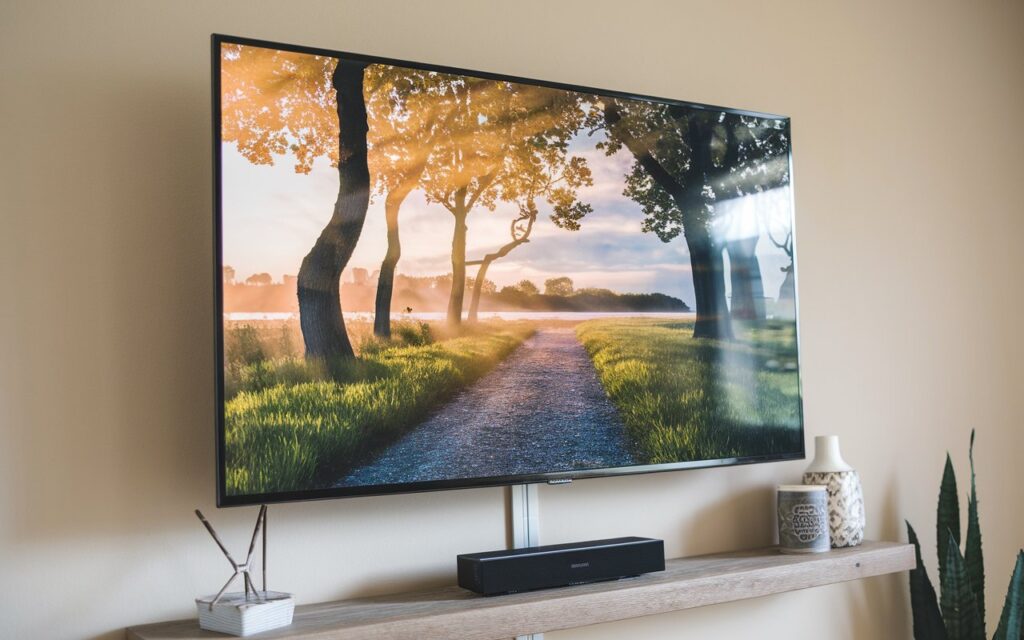Over the past few years’ electronics has been on the move and so has Samsung leading the world in the changes that it brings about in the electronics market. Among all the fields that have been transformed by Samsung tech slices tv innovations, the sphere of television technology seems to be the most notable one. Taking advantages on innovation, detailed images and style, Samsung’s tech defines through the competitors and provides customers with the value of massive experience. Herein the writer takes the readers through the background of Samsung’s television, the key highlights upon the timeline and today’s innovations of the Samsung television set.
The Early Days: Cathode Ray Tubes to Flat Screens
The Change from CRT to LCD
Samsung’s history of television technology can be traced back to CRT televisions that prevailed for quite a number of years. CRT TVs, that were innovative during its release, were large, had significant weight, and not very high resolution. However, Samsung was not unaware of these opportunities and rush to establish investments in Liquid Crystal Display (LCD) technology.
One of the most important shifts in the television ever was the shift from CRT back to LCD. LCDs became a superior technology to CRTs in being thinner, lighter and more energy efficient, having a better picture quality and the capacity to produce a larger raster. Samsung saw this as a trend that needed to be exploited; they launched their first LCD TV at the beginning of the millennium.
History of Plasma TVs
At the same time there were plasma TVs that were capable of far better contrast and saturations of color. In plasma TV markets Samsung initially focused on providing high-quality display products whilst controlling prices. Although plasma had some benefits over LCDs, as those are better black levels and faster response time, the advancement of plasma technology was overtaken by further improvements of LCD technology. One of the wise strategic decisions that Samsung has taken was the decision to gradually withdraw from making plasma TVs and focusing on developing the LCDs and many other new technologies.
The LED Revolution: Slimmest
The History of LED Backlighting
The next a big advancement in the technology used in television was the incorporation of the Light Emitting Diode (LED) backlighting. The first generation of LCDs used Cold Cathode Fluorescent Lamps (CCFL) for backlight that were much less efficient and consequent thickness and weight. LED backlight technology was perhaps the most visible example of how Samsung’s use of this technology dramatically changed the face of television manufacturing, providing thinner, more efficient screens with dramatically better picture quality.
Pioneering Smart TV Technology
In the course of the technological advancement of TV, Samsung discovered that consumers now required the devices to be connected and had smart features. In response, the company launched its first Smart TV in 2008 which incorporated Internet connection and Smart features into the TVs. This innovation redefined the TV from a mere entertainment tool into a ‘smart’ multimedia consumption and gaming, and social network console.
4K and Beyond: Running Head
The Advent of 4K UHD: Indeed, as the consumers continued to yearn for higher resolution screen and overall perceived picture quality, Samsung was to strike again with the launch of the 4K Ultra High Definition (UHD) TVs. 4K UHD came doubling Full HD by its resolution providing outstanding picture, bright and contrast colors as well as very sharp images. Samsung’s 4K TVs were created to provide nothing less than the ultimate in home entertainment – cinema like pictures, live sports and exciting video games.
Not only thanks to the higher resolution, Samsung’s 4K TVs also had such sophisticated picture processing technologies like High Dynamic Range, and Quantum Dot. HDR improved the contrast and colors of the images by providing the real-world quality experience for the users. Quantum Dot technology on its part was again instrumental in creating a larger color gamut and better brightness level pertaining to the picture quality.
Quantum dot technology
Quantum Dot technology was then established as one of the enduring facets of Samsung’s television offerings, specifically when QLED TVs were launched. QLED or Quantum Dot Light Emitting Diode is an enhancement on the LED technology that has been in the market for some time now. The use of Quantum Dots in the backlighting system improved the brightness as well as the color purity and efficiency of energy use by Samsung.
The Age of 8K: Test Taking to the Extreme
8K TVs and How It Started
The desire for innovation did not stop at this since Samsung unveiled its first 8K TV in the year 2018. 8K or Super TVs today boasts of a resolution of 7680×4320 pixels; this makes it four times the value of 4K and sixteen times that of Full HD. This increase in definition offers one of the highest resolutions in the series, thereby increasing the feel of the program compared to previous collections.
However, there were some issues that arose due to the adoption of 8K technology and these include; Currently no native 8K content and enhanced 8K resolution require much more powerful processing. Samsung tackled these issues by incorporating quite innovative upscaling technology into its 8K TVs. It utilizes artificial intelligence (AI) to reconstruct and improve signals, which may be viewed in its essential form as having 8K potential. For this reason, consumers can get the full value of 8K from their screens and videos even when the streaming material is not in 8K.
The AI and Machine Learning integration into TV Technology
They have now become part of the Samsung television technology. These technologies allow Samsung TVs to adapt picture and sound quality elements in real time depending on what contents is being delivered and where it is being delivered. For instance, AI-based upscaling takes an article with relatively poor quality and enhances the quality to the rich quality outlook; machine learning algorithm can change the picture settings for correct lighting conditions.
The options that Samsung has implemented through artificial intelligence and machine learning are not limited to picture detail. Its Smart TVs also come with AI voice control systems, for instance, Bixby through which consumers can control their TVs. Some of these voice assistants can be trained to take preference and usage pattern hence enhances the TV experience.
Looking at the future of Samsung tech slices tv
MICROLED AND MODULAR TVs
In the future Samsung plans further innovations in television, and Micro LED and modular TVs are seen as its future. QLED has been supplemented by Micro LED as a new generation, which accounts for even higher optical characteristics, including brightness, contrast and color gamut. Unlike the current LED as well as micro OLED displays, Micro LEDs do not need the backlight system and the color filters hence making them to be efficient and long lasting.
Modular TVs on the other hand are something different all together They are an innovation that takes customization to a different level. Samsung’s modular TV idea means that the television is made up of constituent Micro LED elements which can be bundled together however the client desires. This approach provides the opportunity to build a TV of different size and with different parameters of the aspect ratio to meet the needs and preferences of the users. Although Micro LED and modular TVs are still in the development phase they are seen as the future of theatrical display and again, Samsung is leading the way.
Environment and Recycling
However, Samsung tech slices tv is also interested in the further development of new technologies and product sustainability, and the environmental friendliness of products. Below are some of the measure that has been taken by the company so as to be in a position to embrace environment conservation while carrying out its television manufacturing.
Conclusion
Here is the story a continuous innovation and advancement in television technology by Samsung. Starting from the CRTs to the current 8K and beyond Samsung has always aimed at the next level in television technology. Through continuous implementing a new technology like LED, Quantum Dot, and AI Samsung has produced devices that go beyond the expected standards of any consumer.
Samsung tech slices tv has not waned from the forefront of the television industry particularly with the introduction of the Micro LED technology and modular TVs and thus expect the company to be in the same position for the next few years. Whether focusing on image quality for the very first time or enriching viewers’ lives with high-level smart solutions, or developing environmental initiatives beyond the manufacturing process, Samsung’s tech cuts through all possible layers, setting new benchmarks and write the further development of television.



